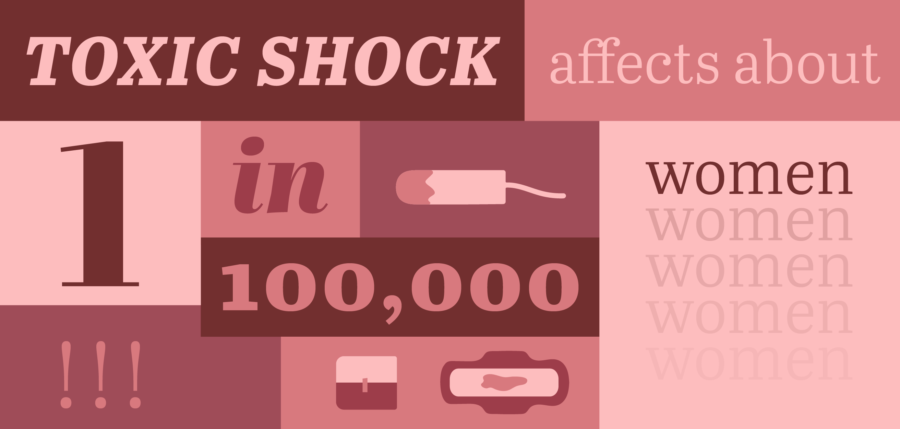Tampons. Almost everyone uses them, but not everyone knows what is actually going into their bodies. This is most likely because periods are a very hush-hush topic in today’s society. In actuality, women should embrace this time of the month because it is what allows the human race to keep on kicking.
Tampons and gynecological health are easy to maintain, but you could be making some small, mindless mistakes that could affect your health and potentially lead to toxic shock. In order to really dive into the dangers of toxic shock, it is important to understand what is in a tampon and what they actually do for our bodies.
In 1933, the brand Tampax was created. The Atlantic tells us that as tampons rapidly became popular, manufacturers began pumping them with synthetic materials. In 1979, you could not find a tampon without synthetics. Because of this, in 1980, there were an appalling 812 reported cases of toxic shock, 38 of which became fatal and those numbers quickly grew.
It wasn’t until 1989 that researchers found a link between toxic shock and the synthetic materials like polyester, viscose rayon and polyacrylate rayon that were in tampons. As this information came out, the FDA spent nearly a decade implementing a standardization system of tampon sizing to help prevent bacterial overgrowth.
These sizes range anywhere from 6 to 15 grams of absorbency, that being the “super-plus.” In 1997, Tampax began developing a new tampon that would have a “premium” applicator; that is how Tampax Pearl came to play. These applicators made it easier than ever to use tampons, and each applicator was sterile and sealed as a preventative measure.
Because of all of these tampon advancements, they are much more safe to use then they used to be, but should still be used wisely.
USA Today says that each year, toxic shock affects about 1 in 100,000 women. While that number is very low, it is still a deadly disease that can affect fertility and potentially kill you.
Because of this risk, as low as it is, it is not recommended to leave a tampon in for longer than 8-12 hours. If you believe that a tampon has been left in for too long, you can self check it, or, if you cannot locate the tampon, go to the ER. As extreme as that may sound, it happens a lot more than you would think, and it is better to have it safely removed to reduce your risk of TSS.
There are some easy things you can do to avoid toxic shock. The first, which is obvious, is to wash your hands before and after inserting the tampon. Next, you should change your tampon every four to eight hours, even if your flow is light. Cosmopolitan recommends to vary the type of tampon you use. For example, you should stop using heavy tampons after about the first day or two and slowly transition into light absorbency ones nearing the end of your cycle.
Also, just a word to the wise, don’t use scented tampons. There is a high potential you could have an allergic reaction to the fragrance, and truly, you don’t need anything else going on down there during your period. Finally, always change your tampons after the shower, going to the bathroom, the pool and the hot tub.
Now, this doesn’t mean you shouldn’t ever use tampons ever again, but just be wise when you do. It is always important to know what is going into your body and what risks come with that. Tampons are typically a safe, effective way to deal with your time of month, but it is better to be safe than sorry, so be cautious with usage in the future.


















